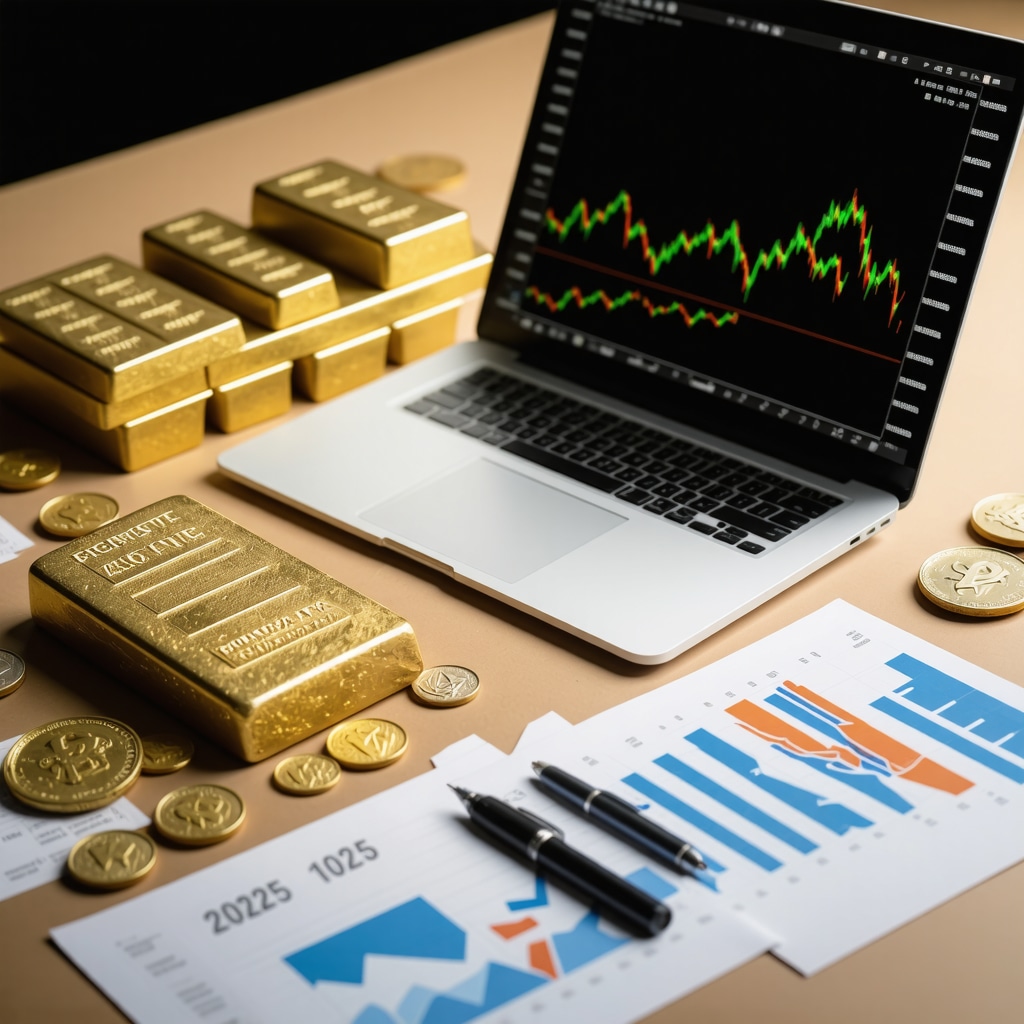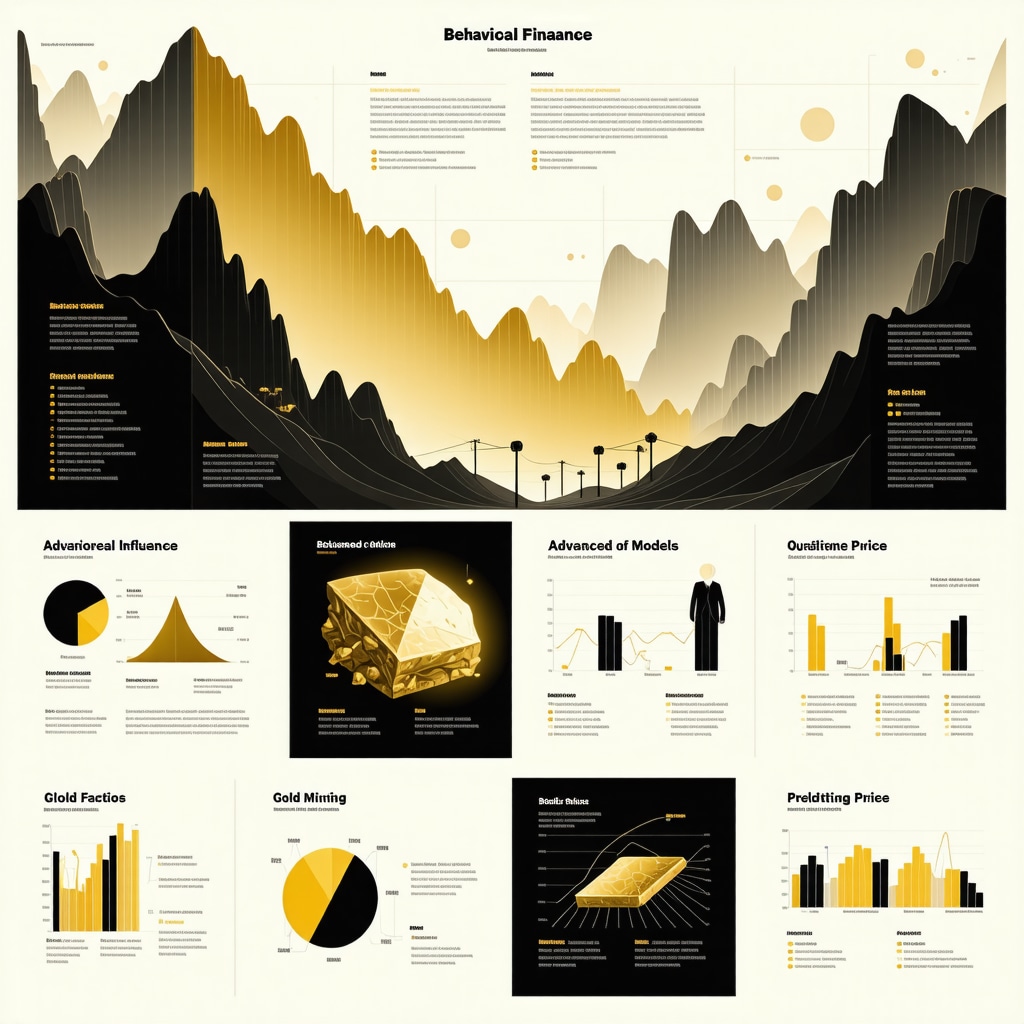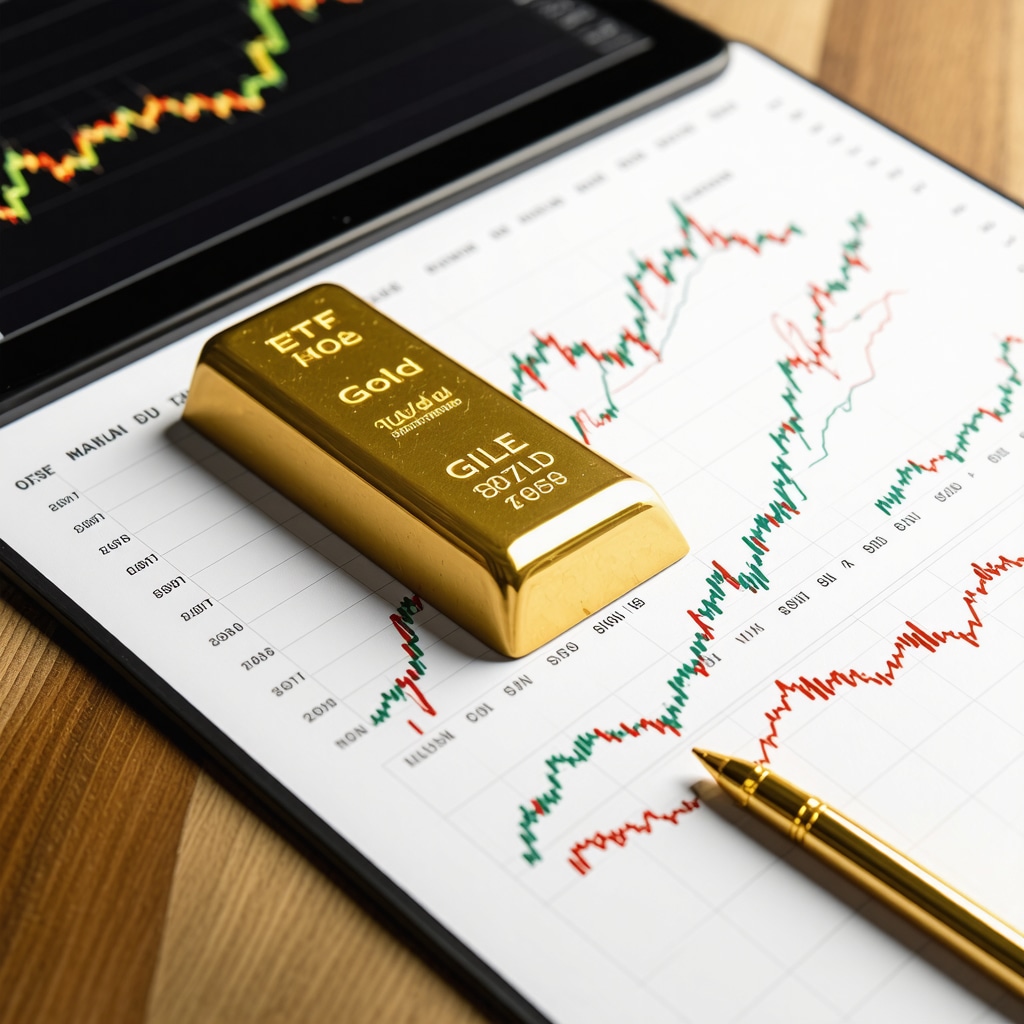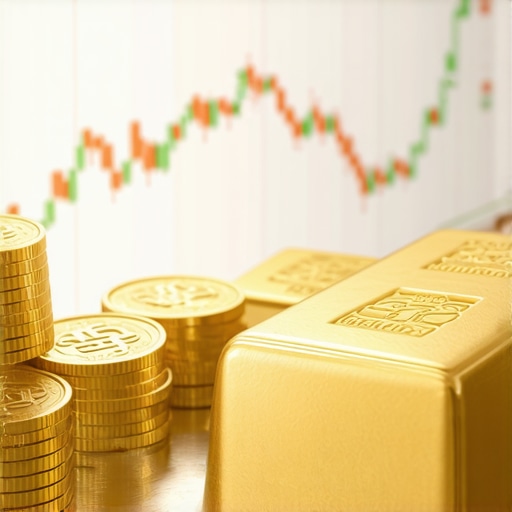Gold Fever: A Shiny Tale of Stocks, ETFs, and Funds
Ah, gold — the timeless glitter that has seduced kings, investors, and even the most skeptical economists for centuries. But if you think buying gold is just about grabbing a shiny coin or bar, think again. Today’s gold investment landscape is a kaleidoscope of choices: from physical bullion to digital ETFs and mutual funds that promise diversification without the dusty vault. So, how do you navigate this golden maze without getting lost?
Stocks, ETFs, or Funds? The Gold Investment Smorgasbord
First off, gold stocks — these are shares in companies that mine or process gold. While owning them is akin to holding a stake in the gold supply chain, beware: they bring a cocktail of risks, including operational challenges and market volatility. For those who like a bit of stock-market drama mixed with their precious metals, gold mining stocks can be exciting but unpredictable. Curious about the best gold stocks to watch this year? You might want to peek at top gold stocks for steady growth in 2025.
Next up, gold ETFs (Exchange Traded Funds) — these are like the golden buffet where you get exposure to gold prices without physically holding the metal. They trade like stocks, offer liquidity, and ease of access. Think of ETFs as the modern investor’s shortcut to gold’s glitter without the hassle of storage or insurance. Need a deep dive? The gold ETFs explained guide is a treasure trove.
Then we have mutual funds focused on gold — a managed investment vehicle pooling your money with others to invest in gold-related assets, including stocks and physical gold. They offer professional management but often come with fees that nibble at your returns. For those who prefer their investments served with expert stewardship, mutual funds might be the golden ticket.
Is Physical Gold Still Worth the Shine in a Digital Age?
With all these digital options, you might wonder if holding actual gold bars or coins is a relic of the past. But physical gold carries a unique charm and certain protections against systemic risks and digital mishaps. The tactile reassurance of a gold bar in your hand is something no ETF can replicate. Plus, during extreme market volatility, physical gold often shines brightest. For tips on buying and storing physical gold safely, check out our best physical gold investment tips.
Investors should also consider that central bank gold purchases heavily influence market dynamics, often driving price trends over the medium to long term. For in-depth insights, the analysis of central bank gold purchases is enlightening.
According to the World Gold Council, gold ETFs have attracted record inflows in recent years, underscoring their popularity among investors seeking liquidity and flexibility (source).
So, what’s your take? Are you team physical gold, or does the digital allure of ETFs and funds pull you in? Share your golden thoughts below — your insights might just help a fellow investor strike it rich!
Understanding the Influence of Central Banks on Gold Markets
Central banks play a pivotal role in shaping gold market dynamics, especially through their strategic gold purchases. Their actions can influence global supply, demand, and, ultimately, price volatility. When central banks increase their gold reserves, it often signals confidence in gold as a store of value amid economic uncertainties, which can spur investor interest and upward price momentum. Conversely, unexpected sales may trigger short-term price dips. For investors looking to deepen their understanding of these market movers, exploring how central bank gold purchases affect price volatility is invaluable.
Gold ETFs vs. Mutual Funds: Which Aligns with Your Investment Goals?
Choosing between gold ETFs and mutual funds requires a nuanced appreciation of their structural differences and investor objectives. Gold ETFs typically offer lower expense ratios and greater liquidity, allowing investors to trade shares throughout the day with real-time pricing. Mutual funds, on the other hand, provide professional management and potentially broader diversification within gold-related assets but may come with higher fees and less trading flexibility. For a comprehensive breakdown, the guide gold ETFs vs mutual funds delves into these distinctions and helps investors tailor their portfolios accordingly.
How Can Investors Leverage Gold’s Dual Nature to Optimize Portfolio Resilience?
Gold uniquely serves both as a tangible asset and a financial instrument, presenting investors with opportunities to blend physical ownership with digital exposure. Integrating physical gold bars or coins into a portfolio offers a hedge against systemic risks, such as currency devaluation or banking crises, due to its intrinsic value and independence from electronic systems. Meanwhile, allocating portions to gold ETFs or mutual funds can enhance liquidity and ease of portfolio rebalancing. Striking the right balance depends on individual risk tolerance, investment horizon, and market outlook.
Recent research from the World Gold Council highlights that portfolios diversified with both physical gold and ETFs tend to perform better during periods of economic turbulence, offering a cushion against inflation and geopolitical uncertainties (source).
Practical Steps to Start or Expand Your Gold Investment Portfolio
Beginners and experienced investors alike should approach gold investment with a strategic plan. Start by defining your investment goals: Are you seeking long-term wealth preservation, short-term gains, or inflation protection? Next, consider how much of your overall portfolio should be allocated to gold, balancing it with equities, bonds, and other assets.
When buying physical gold, prioritize reputable dealers and understand storage options—whether at home, in bank safe deposit boxes, or through secure vault services. For digital investments, research ETF providers and mutual funds carefully, paying close attention to fees, liquidity, and underlying asset transparency. To learn more about building a diversified and balanced portfolio that includes gold, our guide on building a gold ETFs portfolio offers actionable insights.
Have you found a successful strategy balancing physical and digital gold investments? Share your experiences or questions in the comments below — your contribution enriches our community of informed investors!

Decoding Gold Price Drivers: Beyond Supply and Demand Dynamics
The gold market is a complex ecosystem influenced by far more than mere supply and demand. Macroeconomic factors such as real interest rates, currency fluctuations, geopolitical tensions, and inflation expectations weave a multifaceted tapestry that impacts gold prices. For instance, gold often inversely correlates with the U.S. dollar strength, as a weaker dollar boosts gold’s appeal as a safe-haven asset priced in dollars. Meanwhile, rising inflation expectations tend to increase gold demand as an inflation hedge.
Moreover, the interplay between gold futures markets and physical gold demand introduces an additional layer of complexity. Futures contracts can sometimes drive short-term price swings unrelated to underlying fundamentals, necessitating a discerning eye for traders and investors alike.
What Advanced Indicators Can Investors Use to Predict Gold Price Movements?
Beyond traditional metrics, savvy investors track indicators like the Gold-to-Silver ratio, Commitment of Traders (COT) reports, and the real yield on Treasury Inflation-Protected Securities (TIPS). The Gold-to-Silver ratio provides insights into relative valuations within precious metals, often signaling shifts in market sentiment. COT reports reveal the positioning of speculative and commercial traders, offering a glimpse into potential price direction. Real yields on TIPS reflect investors’ inflation-adjusted returns, where lower or negative real yields typically buoy gold prices.
Incorporating these indicators into your analysis toolbox helps to anticipate market trends more astutely. For detailed methodologies and real-time data, the Investing.com gold technical analysis page is a valuable resource.
Leveraging Gold Derivatives: Sophisticated Tools for Risk and Return Optimization
For seasoned investors and portfolio managers, gold derivatives such as options and futures contracts provide powerful mechanisms to hedge risk or speculate on price movements with leverage. Options, especially, offer asymmetric payoff profiles, allowing investors to limit downside while preserving upside potential. Strategies like covered calls or protective puts can be tailored to specific risk appetites and market outlooks.
Futures contracts, however, require careful margin management and an understanding of contract specifications to avoid unwanted exposure or liquidity crunches. Additionally, gold forward contracts enable bespoke agreements for future delivery at predetermined prices, often employed by institutional players to lock in costs or revenues.
How Does the Use of Gold Derivatives Affect Market Liquidity and Price Discovery?
The presence of derivatives enhances market liquidity by attracting a broader spectrum of participants, from hedgers to speculators. This increased activity promotes efficient price discovery, reflecting collective market expectations and sentiment. Nonetheless, excessive speculative activity can also introduce volatility spikes and decouple prices from physical supply-demand fundamentals temporarily.
Academic studies, such as those published by the CFA Institute, explore these dynamics in depth, underscoring the importance of regulatory oversight and market transparency.
Strategic Portfolio Integration: Tailoring Gold Allocation to Complex Investment Objectives
Incorporating gold into a multi-asset portfolio is more art than science, requiring nuanced calibration to align with unique investment goals, risk tolerances, and time horizons. For inflation protection within retirement portfolios, a modest allocation of 5-10% physical gold or ETFs may suffice, providing a buffer against purchasing power erosion.
Conversely, tactical traders might emphasize leveraged instruments or mining stocks to capitalize on short-term price swings, accepting higher volatility. Institutional portfolios often blend physical holdings with derivative overlays and active fund management to optimize both risk-adjusted returns and liquidity.
Dynamic rebalancing is crucial as gold’s correlation with equities and bonds shifts over time, especially during market stress. Tools such as mean-variance optimization models can help identify the optimal allocation mix, but investor discretion remains paramount.
Unraveling the Psychological and Behavioral Aspects Behind Gold Investment Trends
Beyond the quantitative metrics and macroeconomic fundamentals, the psychology of investors significantly shapes gold market dynamics. Behavioral biases such as herding, loss aversion, and overconfidence can amplify gold price swings, especially during periods of heightened uncertainty. Investors’ collective sentiment often drives momentum in gold ETFs and mining stocks, sometimes detaching prices from intrinsic values temporarily.
Recognizing these psychological patterns is crucial for sophisticated investors aiming to time entries and exits more effectively. For a deeper dive into sentiment analysis and its impact on gold, our article on gold price forecast and market sentiment offers nuanced perspectives.
Integrating ESG (Environmental, Social, Governance) Considerations into Gold Mining Stock Selection
With increasing investor focus on sustainable and ethical investments, ESG factors have become pivotal in evaluating gold mining stocks. Companies excelling in environmental stewardship, transparent governance, and positive community engagement tend to enjoy lower operational risks and enhanced reputational capital, which can translate into more stable long-term returns.
Investors who integrate ESG metrics alongside traditional financial analysis gain an edge by identifying mining firms poised for resilient growth amid tightening regulations and shifting consumer preferences. For those interested, our detailed guide on investing in gold mining stocks with ESG insights is a must-read.
How Can Advanced Quantitative Models Enhance Gold Price Prediction Accuracy?
Traditional fundamental and technical analyses are increasingly supplemented by advanced quantitative techniques such as machine learning algorithms, sentiment scoring, and high-frequency data analytics. These models assimilate vast datasets — including macroeconomic indicators, social media sentiment, central bank activity, and futures positioning — to generate probabilistic forecasts of gold price movements.
Such approaches help investors identify subtle market signals and anticipate volatility spikes with greater precision. However, model transparency and overfitting remain challenges, emphasizing the need for expert oversight and continuous refinement.
For practitioners seeking to harness these cutting-edge tools, resources like the World Gold Council’s analytical research provide invaluable empirical data and case studies.
Crafting a Sophisticated Gold Investment Playbook: Beyond Conventional Wisdom
Seasoned investors know that gold’s role transcends mere portfolio diversification; it is a strategic asset that demands dynamic management. Incorporating tactical allocation shifts in response to inflation trends, geopolitical developments, and central bank policies can optimize risk-adjusted returns.
Leveraging insights from central bank gold purchase analyses enables investors to anticipate pivotal market inflection points. Meanwhile, blending physical gold holdings with selective exposure to ETFs and mining equities cultivates a resilient, multi-faceted portfolio.
Engage with our community by sharing your advanced strategies or questions about gold investing — your expertise might illuminate new pathways for fellow investors navigating the complex gold landscape.

Expert Insights & Advanced Considerations
The Symbiotic Balance of Physical Gold and Digital Instruments
In 2025, sophisticated investors recognize that blending physical gold holdings with digital assets like ETFs and mutual funds creates a resilient portfolio structure. Physical gold acts as a hedge against systemic, geopolitical, and currency risks, while ETFs provide liquidity and ease of access. This dual approach optimizes portfolio resilience, as detailed in our guide on gold ETFs explained.
Central Banks as Strategic Market Movers
Central bank gold purchases remain a pivotal force influencing global gold prices and market volatility. Their accumulation patterns signal shifts in economic confidence and monetary policy direction. Investors who integrate insights from analyses such as top central bank gold purchases impacting 2025 market trends gain a tactical advantage in anticipating price inflections.
Advanced Quantitative Models and Behavioral Analytics Enhance Forecasting
Beyond traditional analysis, cutting-edge techniques—like machine learning and sentiment scoring—are being used to decode complex price drivers and investor psychology. These tools reveal nuanced market signals and behavioral cycles, enabling more precise gold price predictions and risk management strategies, as outlined in research from the World Gold Council.
Derivatives as Tactical Tools for Sophisticated Risk Management
Gold derivatives, including options and futures, empower experienced investors to tailor risk exposures and optimize returns. Proper use of these instruments can safeguard portfolios against volatility spikes while capitalizing on market movements, requiring diligent margin and liquidity management as emphasized in safe gold trading techniques.
Curated Expert Resources
World Gold Council Gold Hub: The premier source for empirical data, market research, and analytical reports on gold investment trends and price drivers. An indispensable resource for staying abreast of evolving dynamics.
Investing.com Gold Technical Analysis: Offers real-time charts, advanced indicators (like Gold-to-Silver ratios and COT reports), and technical insights essential for tactical traders and analysts.
BuyingGoldNow’s Central Bank Analysis Series: Deep dives into how central bank gold purchases shape global market trends, providing actionable intelligence for medium and long-term investors.
Gold ETFs and Mutual Funds Comprehensive Guides: These guides, including the ultimate guide to gold ETFs and mutual funds selection, empower investors to discern fee structures, liquidity profiles, and strategic fit within portfolios.
CFA Institute Research on Precious Metals Derivatives: Academic and professional perspectives on how derivatives influence liquidity, price discovery, and systemic risk in gold markets.
Final Expert Perspective
Gold investment in 2025 demands mastery beyond conventional wisdom, blending an understanding of macroeconomic drivers, behavioral psychology, and advanced quantitative tools. The interplay between physical gold and digital instruments, coupled with the strategic actions of central banks, shapes a complex but navigable landscape. Investors who harness these multifaceted insights—while leveraging curated expert resources—position themselves to optimize risk-adjusted returns and portfolio resilience.
Explore the nuanced strategies detailed throughout this article and consider how integrating physical holdings with ETFs or mining stocks aligns with your unique investment goals. Engage with fellow experts and deepen your knowledge by visiting our comprehensive resources on central bank gold purchases and building a balanced gold ETF portfolio. Your journey toward sophisticated gold investing is as much about continuous learning as it is about strategic execution — share your insights and questions to contribute to this evolving dialogue.










